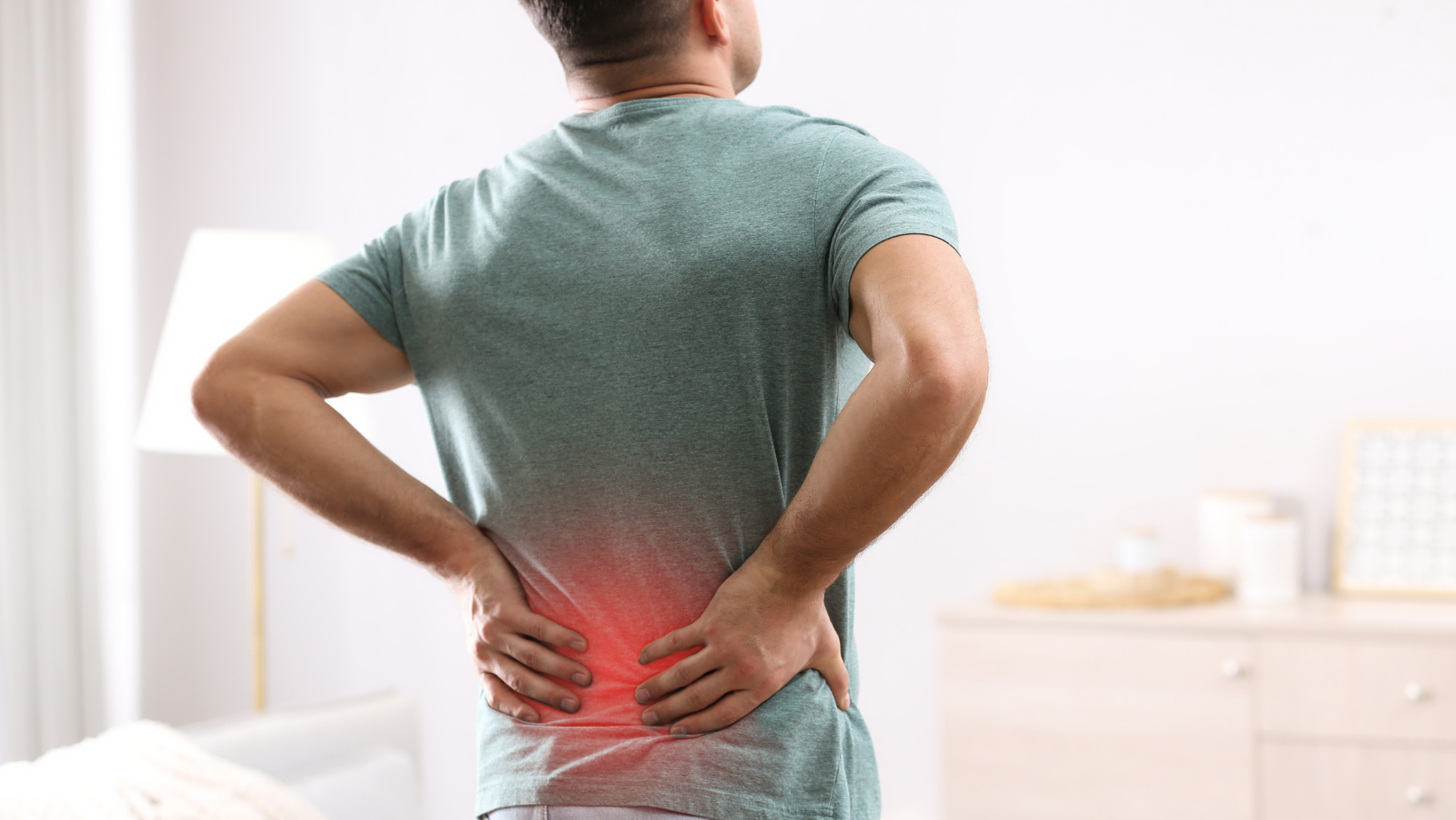Category
Back pain is a widespread condition that affects people of all ages and walks of life.

Have any questions?
If you have any questions, feel free to contact us at [email protected]. A member of our support team will help you shortly.
Share this blog
Fatigue
Energy
Stress
Sleep
Back pain is a widespread condition that affects people of all ages and walks of life. Whether it's a result of poor posture, muscle strain, or underlying health conditions, understanding the diverse causes, recognizing symptoms, and exploring effective management strategies are essential for alleviating pain and improving overall back health. This article will delve into the numerous factors contributing to back pain, examining common causes and providing insights into comprehensive management.
Overexertion, lifting heavy objects or sudden, strenuous activities can lead to muscle strain, causing pain in the back.
Whether sitting or standing, poor posture can contribute to chronic back pain.
Discs in the spine can herniate, putting pressure on nerves and causing back pain. This can occur due to age-related changes or injury.
The narrowing of the spinal canal can lead to spinal stenosis, causing pain as it puts pressure on the spinal cord and nerves.
Various forms of arthritis, including osteoarthritis and ankylosing spondylitis, can cause inflammation and pain in the joints of the back.
Weakening of the bones due to osteoporosis can lead to fractures in the vertebrae, resulting in back pain.
As seen in scoliosis, abnormal curvature of the spine can cause back pain, especially as the condition progresses.
Kidney stones can cause severe back pain as they move through the urinary tract.
Accidents, falls, or direct impact on the back can result in injuries such as fractures or sprains.
Sedentary lifestyles, obesity, and smoking can contribute to back pain by affecting overall health and spinal structures.
Pain is concentrated in specific areas of the back, often in the lower or upper back.
Stiffness in the back limits the range of motion, making it challenging to bend or twist.
Involuntary muscle contractions or spasms in the back cause additional pain and discomfort.
Severe back pain may lead to leg weakness or difficulty standing or walking.
Compression of nerves can cause numbness, tingling, or a "pins and needles" feeling.
Increased pain when performing specific movements or activities, such as bending forward or lifting.
Back pain can interfere with sleep, making it challenging to find a comfortable position.
Practicing good posture while sitting, standing, and walking can help prevent strain on the back.
Regular exercise, including activities that strengthen core muscles, can support the back and reduce the risk of pain.
Maintaining a healthy weight reduces the load on the spine and can alleviate back pain.
Ensuring that workstations are ergonomically designed can prevent back pain associated with prolonged sitting.
Proper lifting techniques, such as bending the knees and keeping the back straight, can prevent muscle strain.
Applying heat or cold packs to the affected area can reduce inflammation and soothe muscle soreness.
Non-prescription pain relievers, such as ibuprofen or acetaminophen, can help manage pain and reduce inflammation.
A physical therapist can provide tailored exercises and techniques to improve back strength, flexibility, and overall function.
Practices such as yoga, tai chi, or mindfulness meditation can help manage stress and alleviate tension contributing to back pain.
If back pain persists or is accompanied by symptoms like radiating pain, numbness, or weakness, consult a healthcare professional for a comprehensive evaluation and personalized treatment plan.
Back pain is a common condition with multiple potential causes, ranging from lifestyle factors to underlying health conditions. Recognizing the symptoms and implementing comprehensive management strategies are essential for individuals experiencing back discomfort. By adopting preventive measures, maintaining good posture, and seeking professional guidance, individuals can take proactive steps toward managing back pain and promoting long-term spinal health. If back pain persists or worsens, seeking the advice of a healthcare professional ensures a thorough evaluation and appropriate intervention for optimal relief and overall well-being.